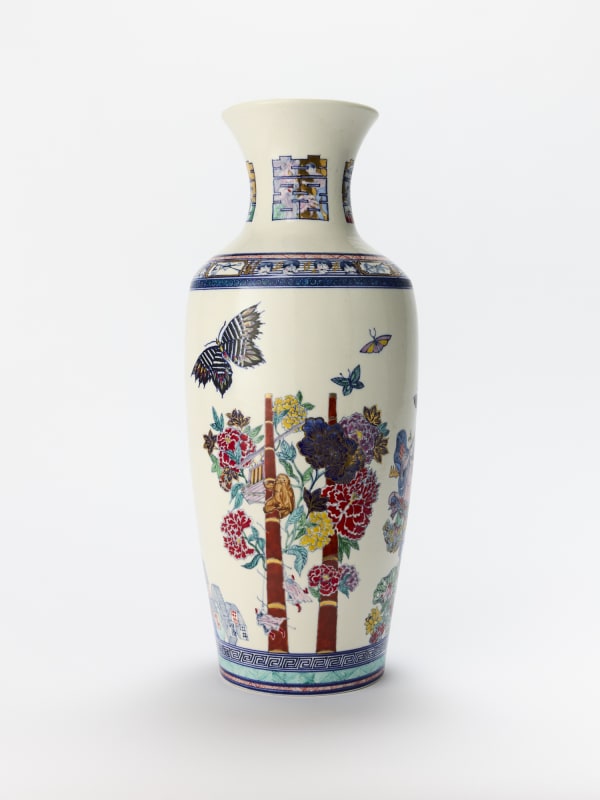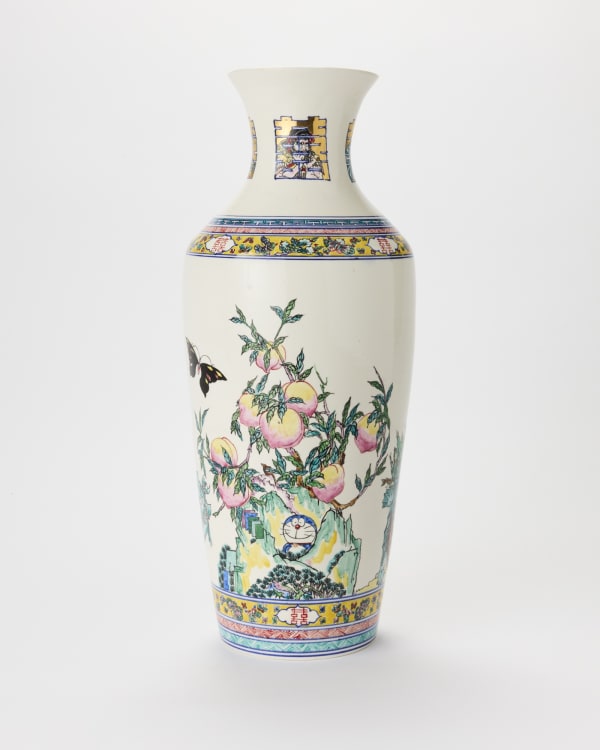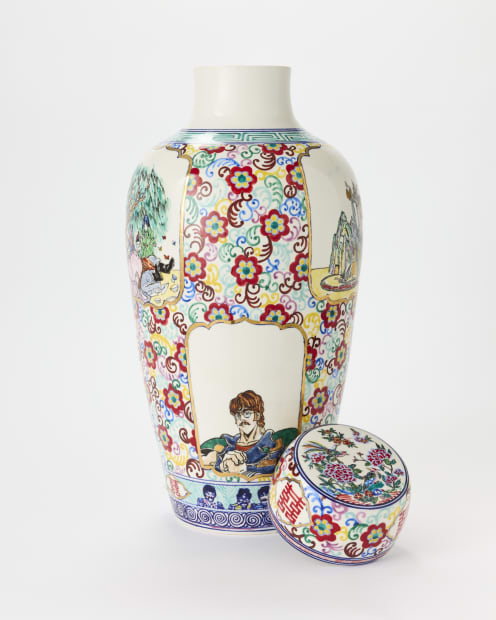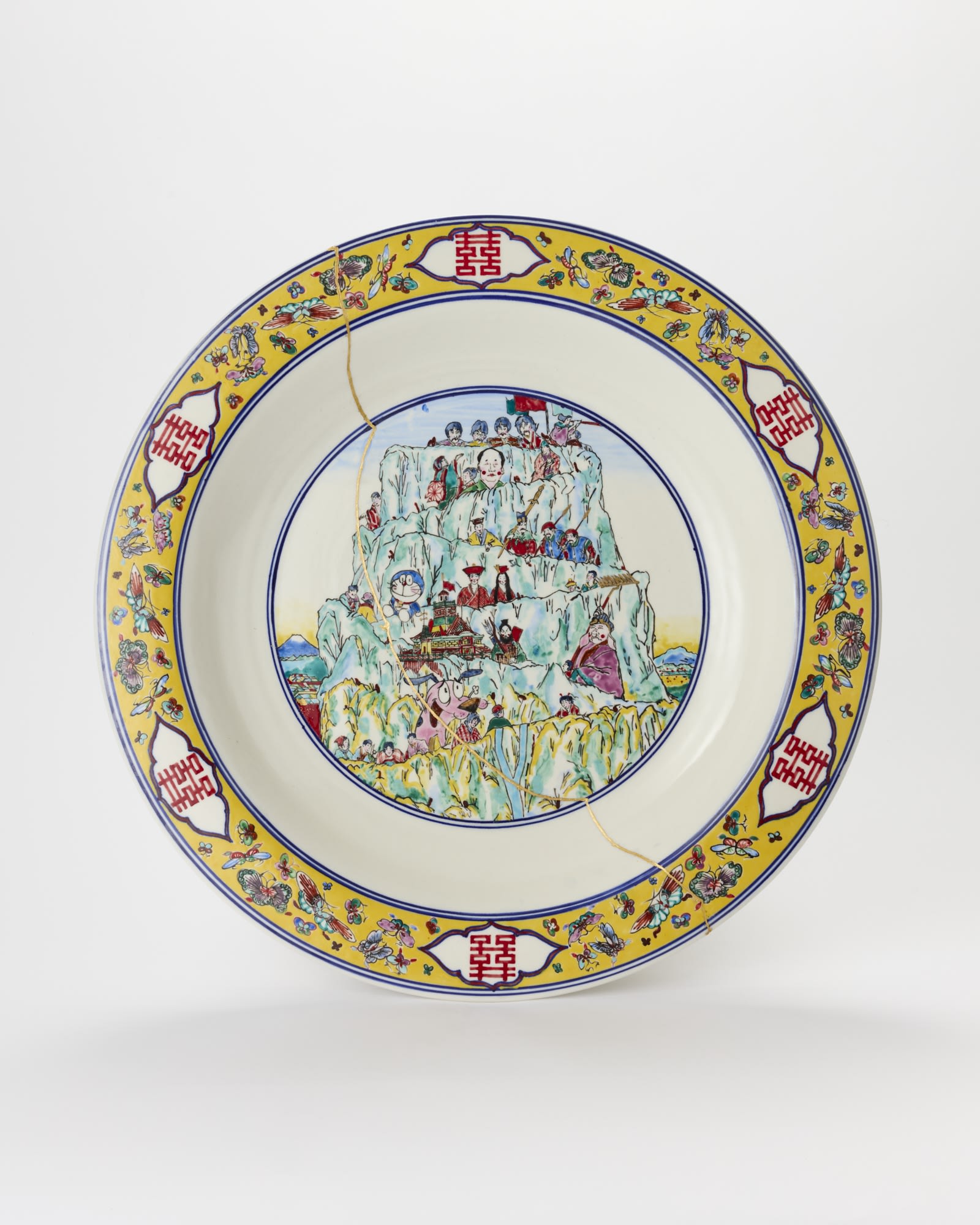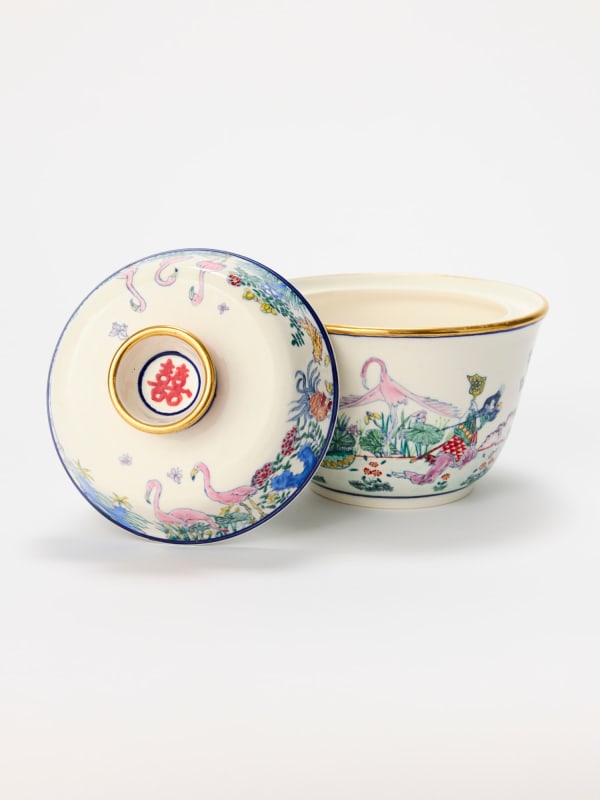-
 Photo by Dean Qiulin Li.
Photo by Dean Qiulin Li. -

-
 Casey ChenA portrait of my personal pop-cultural pantheon, 2025glazed porcelain, ceramic colourants, enamels, gold lustre, and applied gold leaf; fired 5 times47.5 x 47.5 x 4.5 cm
Casey ChenA portrait of my personal pop-cultural pantheon, 2025glazed porcelain, ceramic colourants, enamels, gold lustre, and applied gold leaf; fired 5 times47.5 x 47.5 x 4.5 cm -

-
-
 Casey ChenAn abridged Chinese anthology, 2025glazed porcelain, ceramic colourants, enamels, and gold lustre; fired 5 times23 x 15.5 x 15.5 cm
Casey ChenAn abridged Chinese anthology, 2025glazed porcelain, ceramic colourants, enamels, and gold lustre; fired 5 times23 x 15.5 x 15.5 cm -
Another Jingdezhen Car Boot Sale.
By Ianni HuangTurning over an open suitcase, you pluck an old vase from the remnants of someone’s spring clean. You figure there must be something wrong with it, a reason for its discard or something that explains away the impulse of first intrigue. Scattered among the rolling story of peaches and monkey kings, masterfully painted in Qing dynasty aesthetics, you find something that stops you—a beady-eyed Doraemon relaxing in the shade of an antique tree.
Casey Chen’s Another Jingdezhen Car Boot Sale collides the worlds of traditional Asian ceramics and contemporary pop culture. Like a time traveler from the past, he draws on parallels to how history, legends, and myths persist throughout culture, constantly being recycled into the present and blending with modern sensibilities and style. Much like the continual adaptations of Sun Wukong and the prolonged endurance of 'Journey to the West' in modern storytelling, it is this fascination that becomes the central subject of his works. By placing these mythological characters beside their modern counterparts from popular television series “Dragon Ball,” Casey documents nostalgia and draws links between high and low culture.
Nostalgia is, in itself, a form of play, generally more accepted in adults than what ‘play’ might associate with in childhood. It allows us to imagine a world inspired by our memories but ultimately distorted and formed through narrative, imagining the ways the world could be different and dissociating from the woes of the present. Increasingly framed as a path to healing, ‘play’ and the emphasis on reconnecting with our inner child stem from the human desire to understand the world around us through stories. The undeniable joy in Casey’s artworks and his fascination with daytime cartoons and historic vases tangibly illustrate these desires, reveling in the serious and the silly. Unlike other appropriations of cartoons in contemporary art, there is a softness that sympathizes with our feelings of alienation and instead provides a space in which our love for the past, personal and impersonal, can flourish.
Paying homage to the porcelain capital of the world, Jingdezhen, Casey’s dedication to craft is unmistakable despite the humor and irreverence in his subject matter. Each piece is painstakingly created using traditional ceramic techniques, with multiple firings to achieve their intricate designs. Rooted in historical methods, his works embody the coexistence of the historical and the contemporary, the serious and the absurd, holding within them a kaleidoscope. By reconsidering how we engage with cultural symbols and artifacts, Casey’s ceramics serve as reminders that stories—like the objects that carry them—are never static. They are continually reshaped and passed on. Much like the artisans, storytellers, and myths that inspired them, they reimagine the act of tradition and pull it away from the perfectly normal.
Discarded, but then loved by another—the crux of a car boot sale. These pots, placed on the console or on the hallway stand, turned to face a different side by each selected viewer—a new story revealed or reimagined. In the fragmented and chaotic world, Casey’s artworks remind us of the power of synthesis and of the innate desire for storytelling. They show us how myths are continually mended and bonded to our nostalgia, and how our interest in the past also reflects a deep desire to understand the present.
-



